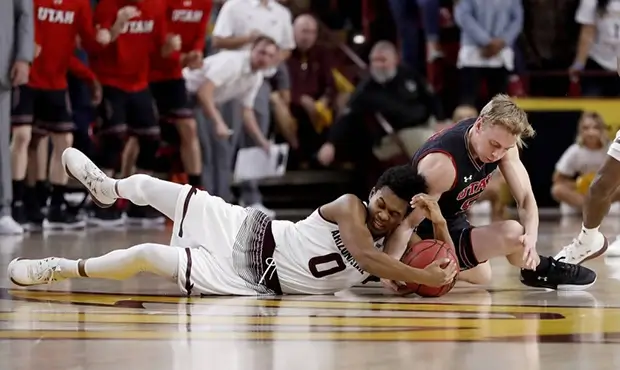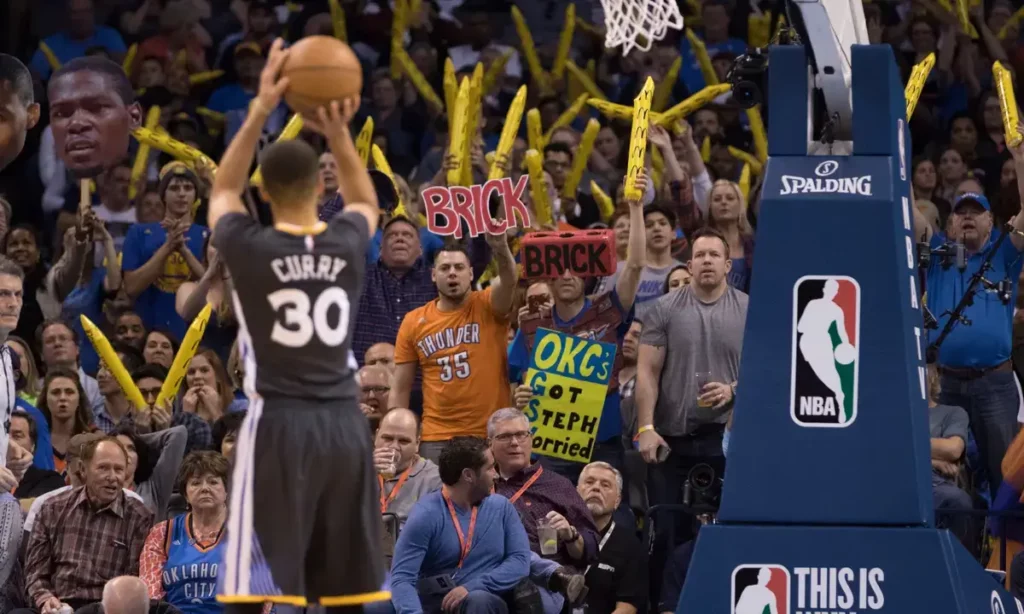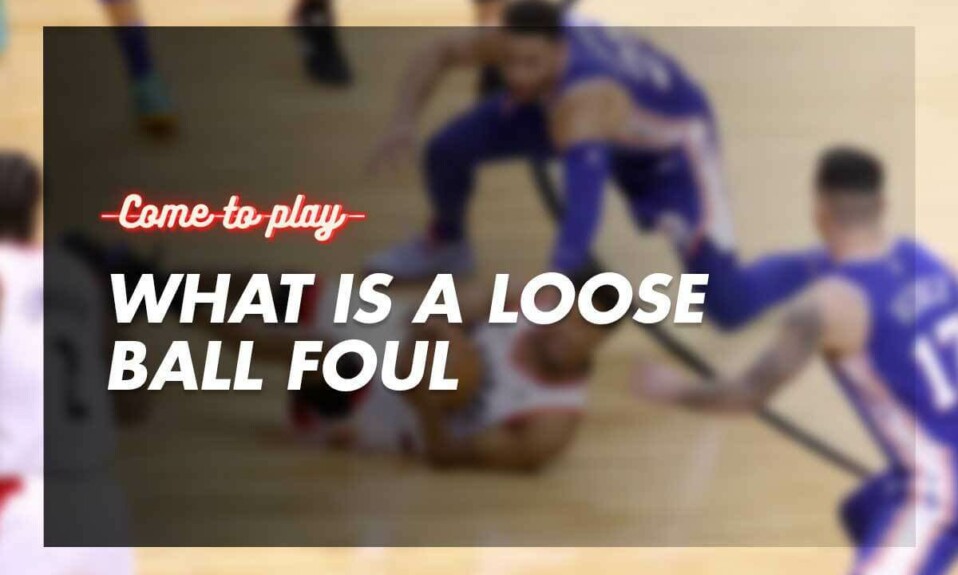Basketball has straightforward must-follow rules. So, to enjoy or play the game, you need to understand its rules.
However, in the basketball rule books, one, in particular, refers to fouls. By now, you must’ve heard the referee whistle a ‘loose ball foul’ in NBA or NCAA games.
So, what is a loose ball foul?
Read our guide with clear-cut NBA loose ball foul explanation to fully grasp it.
What Is a Loose Ball Foul In Basketball?

A loose ball foul is whistled when both teams have contact with the ball (though the ball doesn’t belong to none), and they’re “fighting” to win over its possession.
To be more precise, loose ball foul often includes pushing between players or simultaneously grabbing the ball by both teams.
Hence, a bad pass, a rebound, or even a turnover can be a good enough reason for this violation. And it’s up to the referee whether he’ll call it a foul or let the game flow continue.
When Does a Loose Ball Foul Occur in Basketball?
Several situations can be interpreted as loose ball fouls following the basketball foul rules.
Going for a rebound
A loose ball is almost an instant case scenario whenever a shot doesn’t end with a score. This is usually the case with two-pointers, three-pointers, and free-throw shots.
In the instant when the ball bounces off the basketball rim/backboard, several players (including the opponent) will go after it, i.e., for a rebound.
Also read: How big are Kawhi Leonard’s hands?
When a defence player interrupts the opponent’s pass
Quick passes from one teammate to another are good scoring techniques. But what happens if the opponent’s defence only touches the ball for a brief second?
It’ll change its course! When this happens, a swift reaction from both sides is necessary.
It sounds simple, but the whole image includes pushing and grabbing. Hence, a loose ball foul will be unavoidable.
The offensive team loses the ball
The team with the ball can quickly be without it due to, let’s say, a lousy dribble or slippery hands.
So, if one side gets robbed of the ball by knocking it out of their hands, that counts as a loose ball.
50/50 Air Jump
If the ball bounces off and is in the plain air, two players will probably jump for it. This is a straightforward loose ball, and both players stand a 50/50 chance of getting possession of the ball.
You already know that winning a loose ball regularly includes pushing, grabbing, etc. Therefore, if one side plays aggressively, the referee will call it a ball for the other team and vice versa.
What Are The Penalties For a Loose Ball Foul?
A loose ball foul isn’t considered a serious violation — it won’t foul out a player out of the game. Still, this particular foul can seriously jeopardize the victory of any of the teams.
These are some of the penalties that follow after a loose ball foul is called.
Shot Clock Reset
When the referee calls a loose ball foul, the shot clock keeps on counting. In other words, the team who had the ball won’t get a shot clock reset.
The team who battled to gain possession of the basket will be rewarded with a clock shot reset instead.
A Ball Steal
During a dribble, the defence can poke out or push the ball from the hands of the offensive player. However, if the defensive player picks up the ball first, this would be considered a ball steal.
Also read: 20+ Fun facts about the NBA
A Chance For Free Throws

A loose ball foul can create an opportunity for free throws for one of the teams. So, which team gets free throws?
The offended team will be given the ball, but no free throw shots. This applies, given that the team against which a foul was called is not in the penalty. So instead, the team will be granted the ball possession on the sidelines.
Ball possession occurs near the spot where the game was first disrupted. But remember that it can’t happen below the free throws line.
Otherwise, the offended player is given a free throw shot + another one that’s considered penalty-free. This will happen only if the team that the loose ball foul was called upon is in the bonus situation.
Extra information: Loose ball fouls are counted as the teams’ fouls (for the offending team). At the same time, they’re marked as a personal foul towards the offending player.
Does a loose ball recovery count as a steal?
Recovering a loose ball counts as a steal only if a defensive player picks it up, i.e. recovers it from an offensive player.
Also read: What is a double rimmed basketball hoop?
Final Thoughts
So, what is a loose ball foul? It’s simple.
When you see players fighting over the possession of a ball that has contact with both teams but doesn’t belong to any – that’s a loose ball foul.
Loose ball fouls can be explained through several scenarios. And, from everything said so far, creating a loose ball situation happens almost regularly.
For instance, a weak dribble game ends with a poked-out basket or players going for a rebound.
Ultimately, these fouls are considered harmless in terms of violations. Yet, they’re capable of changing the whole gameplay for both teams.
You might want to read more about:

